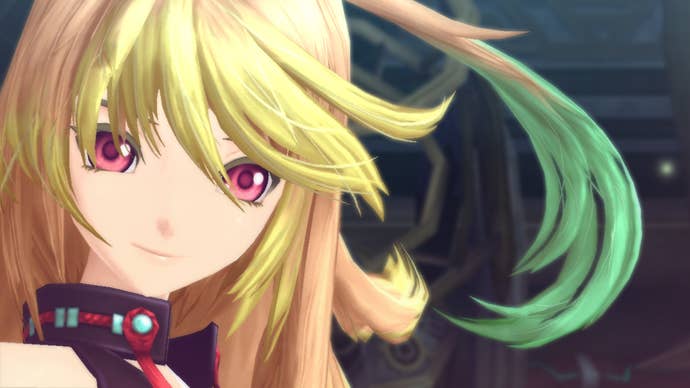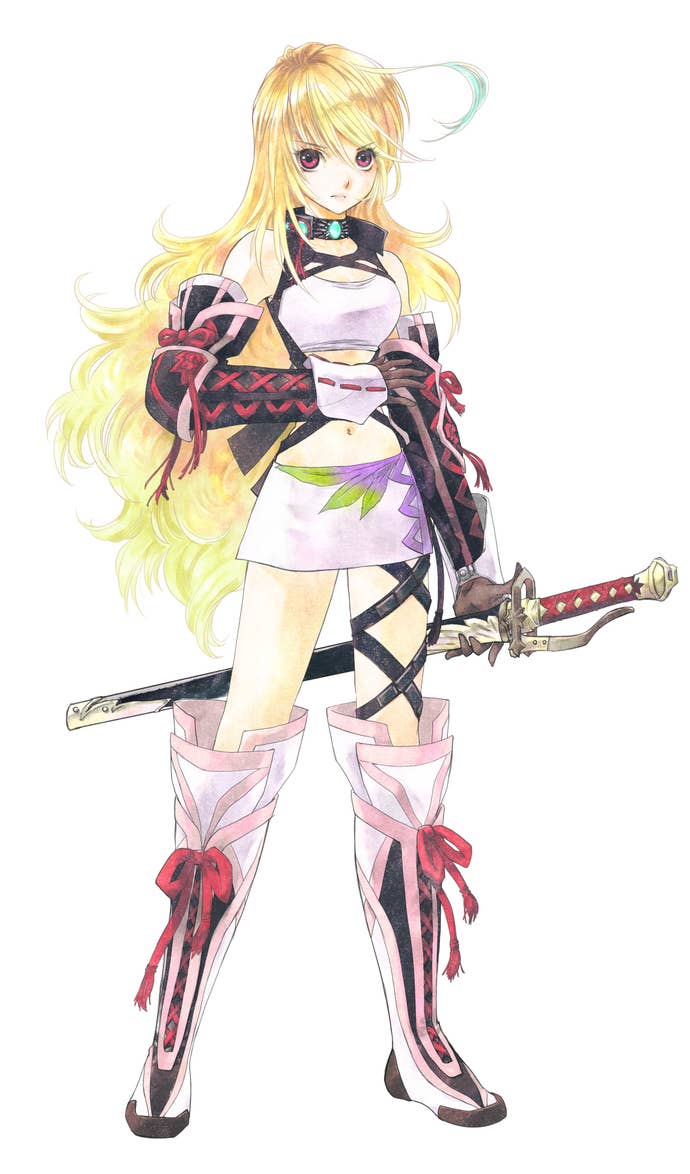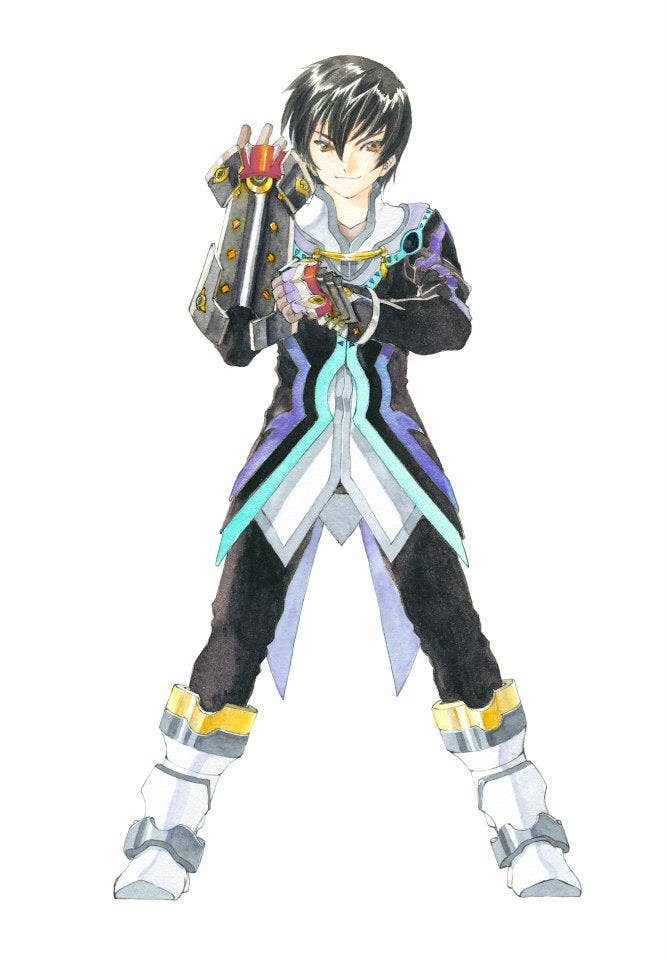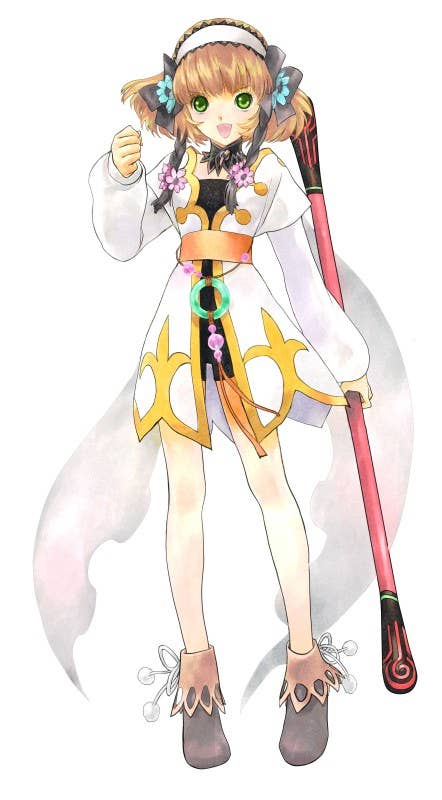Tales of Xillia Review
The latest installment in Namco Bandai's long-running JRPG series sets a number of fantastic examples for other developers to learn from -- and is quite simply a marvellous game in its own right, too.
This article first appeared on USgamer, a partner publication of VG247. Some content, such as this article, has been migrated to VG247 for posterity after USgamer's closure - but it has not been edited or further vetted by the VG247 team.
Tales of Xillia understands me. Or, at the very least, it understands the reason I play Japanese role-playing games, and generally find them more satisfying than their Western counterparts.
It's something very simple, really; it's nothing to do with presentation, music, or gameplay, though I will admit each of those play a part in my affection for this type of game. But no, the most important thing for me is a very simple narrative trope known as nakama.
Nakama is a Japanese term that literally means "fellow" and is often translated as "friends" or "companions." When used in reference to a narrative, it refers to the idea of true companionship; a group of characters who gather together and act as what is, in effect, a substitute family for one another. They might not always see eye-to-eye and sometimes their relationships might even devolve into outright hostility depending on the direction the story goes, but they all share a connection; a bond that goes far deeper than simple friendship, but which doesn't necessarily involve romantic and/or sexual love.

Some Western developers get this idea pretty well -- many BioWare games are built around the concept, for example -- but, to my eyes, anyway, no-one does it quite like the Japanese. When I think back on the games I've played over the years, the groups of characters to whom I feel the strongest connections have, without fail, been the ones who display this strong sense of connection with one another; these groups have, not coincidentally, all been casts of Japanese games.
Xillia works so well because it isn't shy or half-hearted about embracing this concept and running with it. Even if you're doing little more than travelling back and forth collecting materials to unlock better items in the shops rather than actively attempting to advance the story, there's always something entertaining going on between the characters. This could be a full-length skit of various members discussing the most recent happenings in the story, or simply one of the characters complaining that they're hungry -- a convenient, in-character reminder to the player that food items are actually rather useful.
The game's frequent battle scenes are used to enhance characterization, too; the post-combat skits, many of which involve multiple characters interacting directly with one another, never fail to raise a smile. ("You have big hands. Interesting. No wonder you pack quite a punch." "U-um, thanks?") Even the ones that are unashamedly cheeseballs -- "Feel the beat!" "And ride the rhythm!" "All the way to victory!" -- don't feel out of place when taken in context of the characters' relationships with one another, and for every grimace-inducing cheesy line there's a genuinely amusing "My sword will not falter!" "M-my staff will try not to falter!" moment.
But let's not talk so generally; it would be remiss of me to talk about characterization in Xillia without drawing particular attention to one of the two protagonists -- Milla Maxwell, the female playable character, who is worthy of further exploration for a number of reasons.
Milla eschews easy and overused stereotypes in favor of something much more interesting.


Milla is actually a spirit who has taken human form. This isn't really a spoiler, as it's revealed rather early on, but it is relevant to any discussion of her as a character. Although at first glance she may appear to be dressed somewhat provocatively, it becomes very apparent as the story progresses that she deliberately chose to cultivate such an appearance to her own advantage -- she even admits at one point that she dressed in such a way in order to manipulate men. She notes at another juncture that the concept of "gender" holds no real relevance to her since, when she's not in her human form, she's a timeless, ageless, sexless "force" rather than a "person" as such; consequently, despite her appearance as a frighteningly skinny 20 year old with enormous hair and a tiny, tiny skirt, it never feels like she's overly sexualized.
Milla's nature has a number of knock-on effects for her characterization. Most notably, it means that she's not the type of female lead who feels like she's there purely to be eye candy or a love interest for the male protagonist; she is by far the most capable character in the entire party, even after she undergoes a distinctly Metroidish "abilitease" sequence within the first half an hour of the story. She's a well-developed character in her own right, and one that, judging by anecdotal evidence on social media anyway, a decent proportion of female players seem to feel they can relate to.
She's also quite simply an entertaining character. Part of her appeal is due to Minae Noji's wonderfully deadpan delivery on the English dub (there's no option for Japanese voices, sadly, but the dub is pretty solid), but it's also down to some good writing. It would have been easy for a character like Milla to be saddled with the "innocent girl from another world looking at everything in wonderment" trope, but thankfully she eschews that easy and overused stereotype in favor of something much more interesting: she is by turns curious, forthright, blunt and passionate; more importantly, there's a real sense of her actually developing as a character over the course of the story rather than remaining a one-trick pony.
She also forms a suitable "hub" around which the rest of the cast can gather. Although you have the choice of playing either as Milla or the teenaged male protagonist Jude at the outset of the game, the overarching story of the game as a whole is very much Milla's quest. The other characters all complement her in different ways, ranging from the anxious determination of Jude to the gruff wisdom of elderly party member Rowen via the spunky rambunctiousness of Leia, the resident "childhood friend" character -- hey, just because the protagonist breaks a bit with convention doesn't mean we can't enjoy a few other clichés along the way.
In other words, as an ensemble cast, the sense of nakama is very much present and correct; it's not always an easy ride for the group, but just a few hours into the story and you'll absolutely feel these characters belong together, and you'll be sorry to leave them behind when the credits roll.
The game could have been a barely interactive visual novel for all I care; the characters and story are well-done enough to carry the experience by themselves.


You've doubtless noticed that I've barely mentioned the "game" side of things at all, and that's entirely deliberate; for me, I've actually found it the least important part of the experience. The game could have been a barely interactive visual novel for all I care; the characters and story are well-done enough to carry the experience by themselves.
It's fortunate for those of you who like to do more than press the "continue" button over and over, then, that Xillia is also a slick, well put together game. Although its narrative structure doesn't break with JRPG conventions in that you're very much along for the ride on a pre-composed story rather than making decisions that influence the outcome, there's plenty of things to do at any given point; progressing through the game opens up numerous sidequests and side stories, all of which enable you to learn more about the characters and the world as a whole.
For those of you who simply want to charge through and complete the story, these side events are all entirely optional, too; rewards are never game-changing, and usually come in the form of "attachment" items you can use to customize the appearance of your party in ways ranging from the subtle (a lock of wayward hair) to the outlandish (floppy bunny ears) via the just plain weird (a perpetually dripping nose) -- and all attachments can be moved, rotated, resized, recolored and even attached to completely inappropriate parts of the body. (Try not to think too much about the mischief you could get up to with the drippy nose.)
Pleasingly, the fact that almost the entire game is rendered in-engine (with the exception of the "skits," which use animated anime-style portraits, and occasional anime cutscenes) means that whatever monstrosities you create with the attachment system will appear in cutscenes; how seriously you take the story will, consequently, largely be determined by how you've made your characters look, but equally the opposite is true -- if the story engages you, you'll probably want your characters to look their "best," subjectively speaking.
Tales of Xillia is a particularly strong example of why JRPGs still have a place in the modern gaming landscape.


Battle sequences are engaging and fun, blending simple direction-and-button combo-based action gameplay with more abstract JRPG systems, and if you get tired of playing as one character, it's no problem to switch to another and enjoy experimenting with each party member's unique abilities and mechanics. You can even, as with previous Tales games, connect extra controllers and enjoy cooperative combat with friends -- great for those who have spectators while they play. Combat can be a little easy at the normal difficulty level, but there are harder settings, and later in the game there's a coliseum in which you can test your skills with a single character without the backup of your party members -- if nothing else, it'll make you appreciate how much the usually excellent AI helps you out under normal circumstances.
There's easily a lot more I could talk about with regard to Tales of Xillia, but in the interest of allowing you to discover more of its hidden joys for yourself, I'll restrain myself. I will say this, however: the next time someone makes a sarcastic comment about the JRPG genre being "dead," you have my full approval to thrust a copy of this in their face while bellowing "IS IT? IS IT REALLY?"
Because no, it isn't. It is very much alive and well -- albeit keeping a rather more low profile than in previous generations -- and Tales of Xillia is a particularly strong example of why JRPGs still have a place in the modern gaming landscape. It's an essential purchase for all JRPG enthusiasts, whether you're a nakama fan like me or simply someone who enjoys solid, well-designed games; there's something here for almost everyone to enjoy, assuming, as with any other RPG, you have the patience and/or time required to commit to it.
The Nitty Gritty
- Visuals: A little inconsistent, though not distractingly so; some areas -- particularly "filler" regions between towns and dungeons -- are a little bland, while more important locations have a gorgeous watercolor-esque beauty about them. Character models, meanwhile -- particularly for the main cast -- are full of personality.
- Music: An excellent mix of atmospheric and catchy tracks; downloadable content allows you to customize battle themes further in exchange for purchasing new costumes.
- Interface: Intuitive, well-designed and slick; the game also introduces new concepts and mechanics with simple, quick, no-nonsense tutorials that inform without being intrusive.
- Lasting Appeal: There's lots to do, even in a single playthrough: the main story, the sub-event sidequests, earning all the titles, upgrading all the shops… and then you can do it all again in a New Game Plus, possibly with the other protagonist. Yep, in terms of dollars-per-hour of entertainment, this is a strong one.
ConclusionLightning who? Milla Maxwell is not only a great female protagonist that other developers would do well to learn from, she's simply a great character, period, and one who deserves to stand alongside the genre's longstanding stars. Her game's no slouch, either; if you have the slightest interest in JRPGs, you won't want to miss out on this one.








